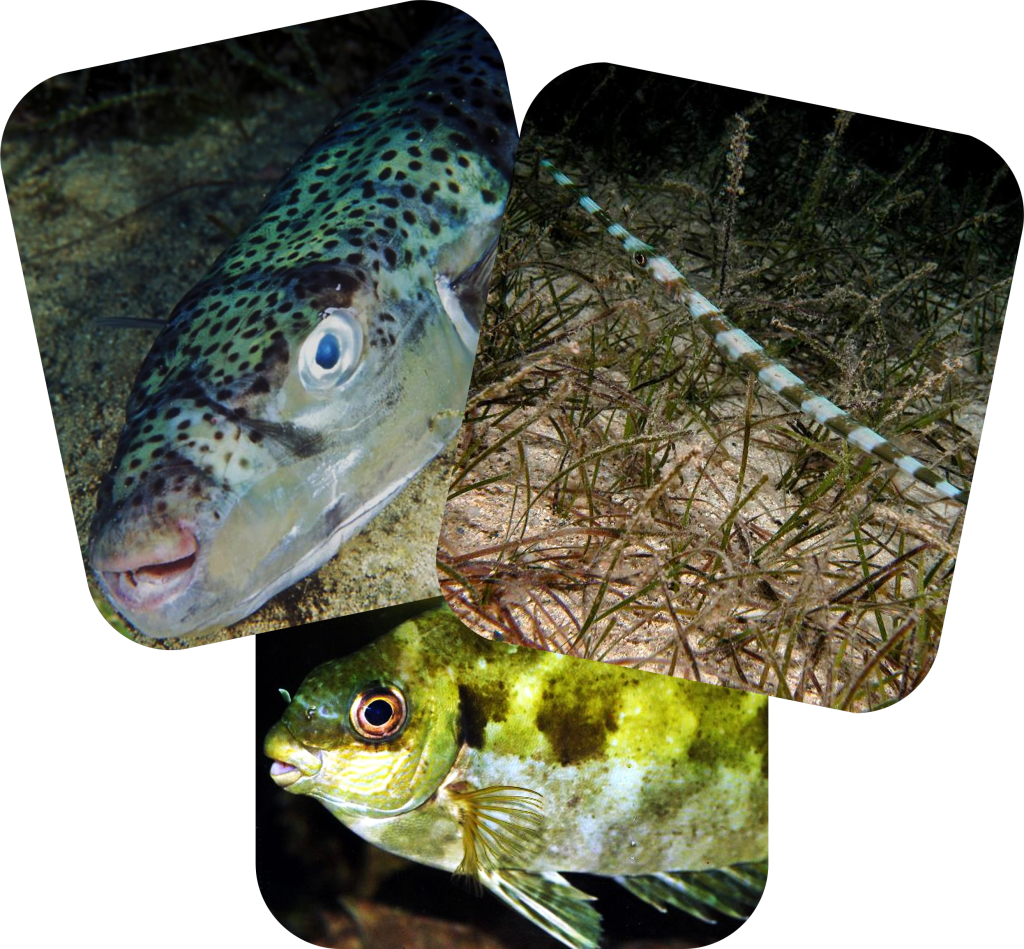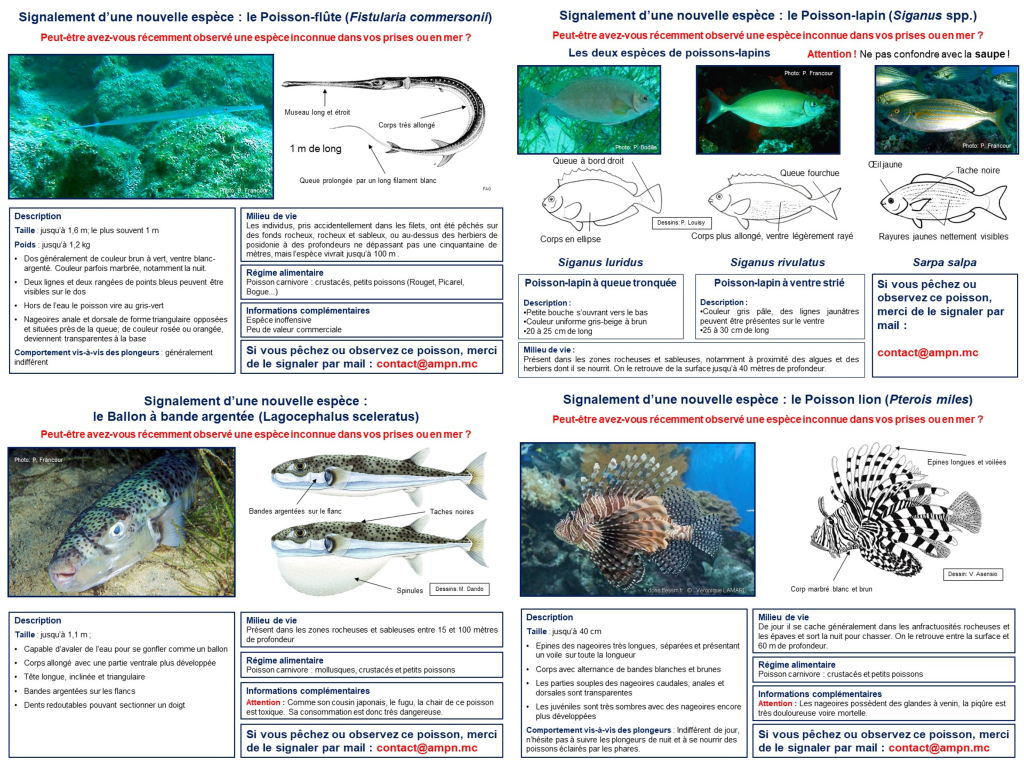Monitoring of non-native species
Since the opening of the Suez Canal in 1869, a continuous invasion of non-native species from the Red Sea and the Indian Ocean has occurred in the Mediterranean Sea. This artificial link established by humans has eliminated the natural geographic barrier that separated the Indo-Pacific fauna and flora from the Mediterranean. This has led to the introduction of marine organisms into the Mediterranean which is known as Lessepsian migration, a phenomenon accelerated by the gradual warming of the Mediterranean and the recent widening of the canal. Today, the distribution and impacts of Lessepsian species is a major conservation issue. The absence of predators for these species in their new environment greatly increases their establishment success and some of them become harmful to native biodiversity. These species are then called invasive species.
Concerning fish, from 2010 observations of Bluespotted cornetfish (Fistularia commersonii), native to the Indo-Pacific, were made along the Monaco coast: in October 2010, 3 individuals of 95 cm were captured with a net in Cap d'Ail by a fisherman at a depth of 23 m; in 2015, a 110 cm individual was seen on the surface in Monaco's Port Hercule; in November 2016, 2 individuals measuring approximately 90 cm were observed on the Spélugues MPA; in December 2016, 1 individual measuring 90 cm was observed west of Larvotto MPA on scree. From an ecological point of view, the Bluespotted cornetfish is considered a high trophic level predator which has adapted very well to the Mediterranean environment. The arrival of the Bluespotted cornetfish may have a significant effect on the population structure and dynamics of indigenous communities, but it seems premature to predict the potential impact on ecosystems or fisheries in the Mediterranean.

Non-native Mediterranean fish, from left to right: silver-cheeked toadfish, rabbitfish and bluespotted cornetfish.
Other fish species from the Red Sea are currently expanding to the western Mediterranean basin. These include rabbitfish (Siganus luridus & Siganus rivulatus) whose grazing creates underwater deserts, affecting coastal algal communities and consequently coastal fish populations. The silver-cheeked toadfish (Lagocephalus sceleratus), a high trophic level predator, is also expanding and, like the rabbitfish, should arrive on the French and Monaco coasts within a few years. The lionfish (Pterois miles) is also expanding towards the western basin. This same species has had significant negative impacts in the Caribbean Sea by affecting fish stocks and thus represents a potential threat to fish populations on the Monaco coast and throughout the north-western Mediterranean.

Reporting sheets for non-native species. To enlarge the sheets select the species from the following list: bluespotted cornetfish, rabbitfish, silver-cheeked toadfish, lionfish.
The gradual warming of the Mediterranean and the acceleration in the number of species coming from the Indo-Pacific constitute a definite threat to Mediterranean ecosystems. The establishment of permanent monitoring by the scientific community but also within the framework of participatory science through prior training for divers makes it possible to report the arrival or establishment of non-native species.
To find out more...
- 2016: Pr. Patrice FRANCOUR, Méditérranée : une mer en pleine mutation biogéographique -
- 2016: Monaco Info Report, Non-Native Species Conference-
